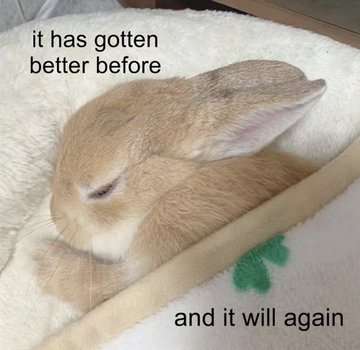One commonality between the spaces that exist in the back rooms are ones that emulate doctors offices, malls, corridors, pools, playgrounds, etc. all of these are either public or pseudo public spaces (like big box stores). Also there is a nostalgic quality to them, they all exist in a “built in the past” sort of context.
I think the backrooms doesn’t represent a fear directly connected to public spaces, but rather the combination of fear and intrigue of the private spaces next to public spaces. It’s that feeling when you’re a kid in the mall and you see a door marked “employees only” or “authorized personnel”; what’s behind that door? Could be something cool, could be something scary, I’d get in big trouble if I went in there but that makes it all the more alluring.
That’s why you see that trope in fantasy and sci-fi all the time: if you knock three times on this side door and then turn the doorknob clockwise during a full moon, instead of opening to a restaurant kitchen it’s a door to a magical realm. Or the bridge and tunnel authority building in Men in Black, unassuming building thousands of people pass a day but if you’ve got the right ID the receptionist will let you into the secret government alien agency.
That’s why backrooms lore revolves around someone going into the infrequently used part of a building and through some rip in the space-time continuum back there where they no clip into the backrooms.
Also explains why it’s most popular with kids who haven’t worked in these places yet.
deleted by creator
I think it’s more that these are big empty places that are usually full of people. So they’re familiar but not, it’s like uncanny valley for buildings.
Also I feel like it’s somewhat related to megalophobia and submechanophobia? At least the pool ones strike me as that.

The Backrooms are a fictional location originating from a 2019 4chan thread. One of the best known examples of the liminal space aesthetic, the Backrooms are usually portrayed as an impossibly large extradimensional expanse of empty rooms, accessed by exiting (“no-clipping out of”) reality.
empty room creepy

for me it’s more the claustrophobia. the increasing dread of not being able to get out of a labyrinthine space. I’ve literally had nightmares like this, lost and trapped in some winding fancy hotel hallways…
I think they’re more a fear of “waiting” sort of spaces. Spaces that don’t serve any useful purpose but to waste your time as you travel through them. I think it stems from the fact that so many of us have so little free time in our lives, that simply travelling from place to place (and wasting time doing it) is subconsciously terrifying. In particular, traveling to and from work is an awful part of most people’s day, but it is so normalised that people can’t even comprehend that it is upsetting and unpleasant. So people project that frustration of capital both demanding every second of people’s time, but also not using that time in a productive way.
But then the kids got their grimy hands all over it and now it is basically just RoNiteCraft: the wiki, and is just a collection of vaguely video gameish “lore” about random monsters and their power levels and bullshit like that.
I’ve thought about this a bit but not super in-depth. I think you’re right about the fear and anxiety about public spaces. I would also throw in some other theories, such as the Freudian uncanny, where something is off about a familiar space that causes dread, and a desire to correct what’s off-putting. Imagine ANY contained space that you’re unable to escape; surely any bland office floor you’re on must have an exit and a staircase–now imagine that it doesn’t. Another writer, Roland Barthes, talked about young people really enjoying building forts and being in boats, what I’ve seen elsewhere described as “amniotic tranquility,” where something is storming or thrashing outside of your contained, safe space. The backrooms seems like an inversion of amniotic tranquility, where the protective fort is suddenly what you need to escape from. Hence the fascination on some subconscious level.
I think this is the beginning of a thesis topic. Get credit for your idea.
deleted by creator
Remember being a small child and all the places adults would drag you to would seem so… huge?
Then you grow up and become an adult and those places feel so much smaller, way less intimidating.
When you take away all the people in those places (a grocery store, a mall, a school) they suddenly become very large again. All those anxieties or imagined fears from childhood can easily come flooding back.
deleted by creator










